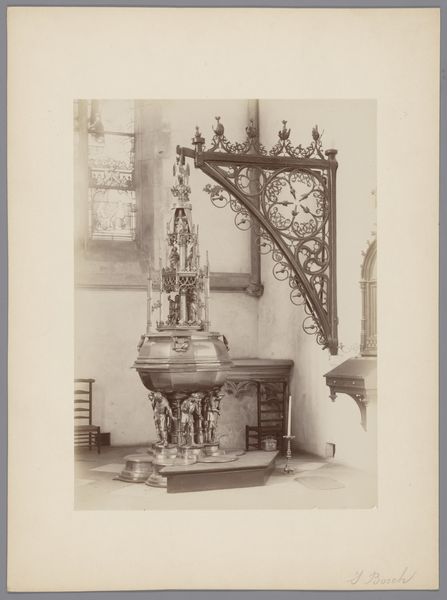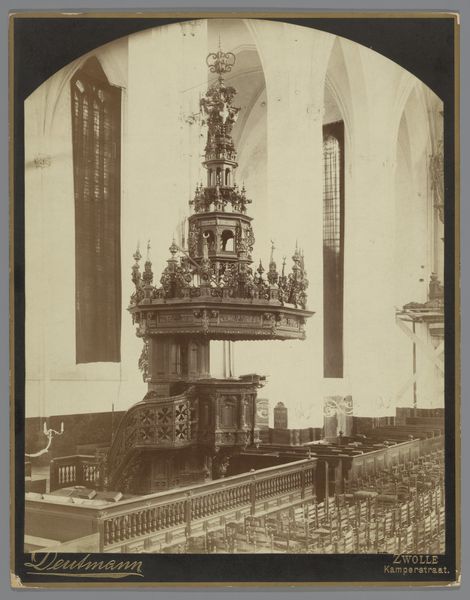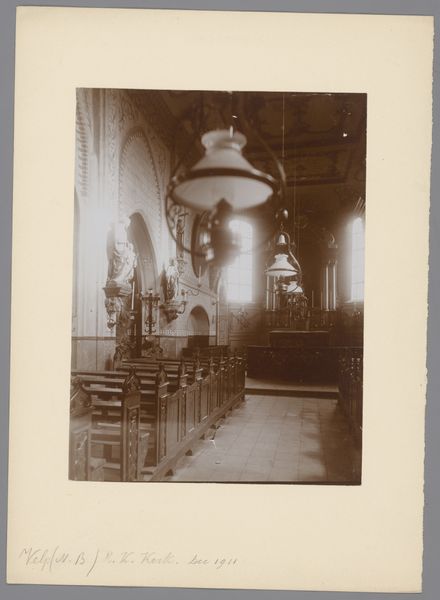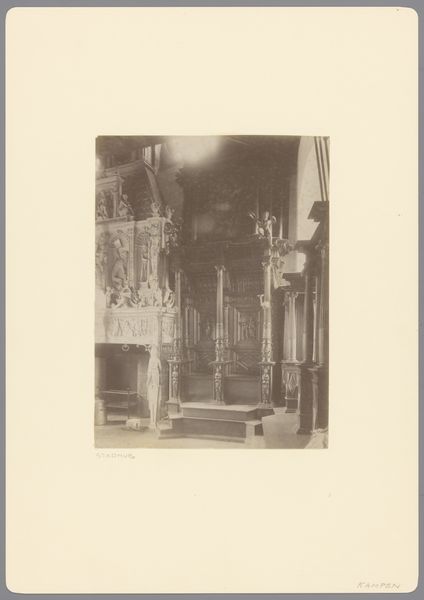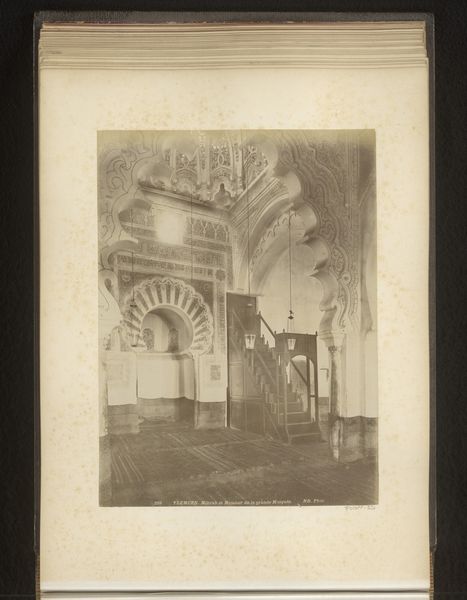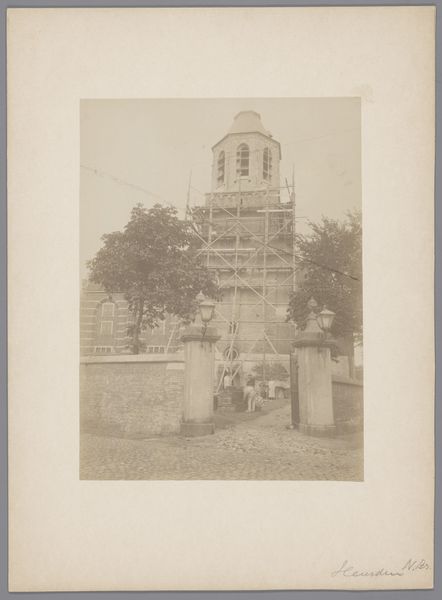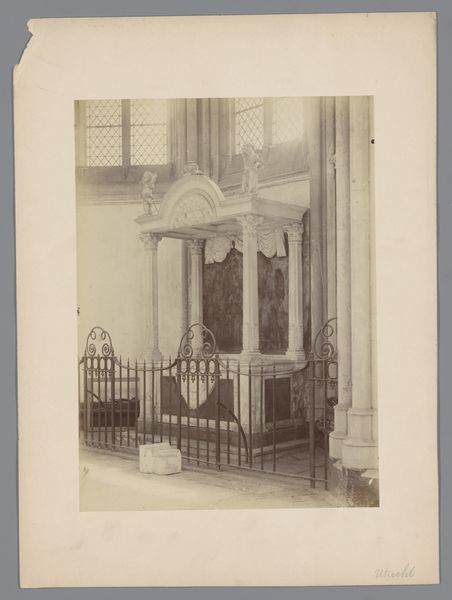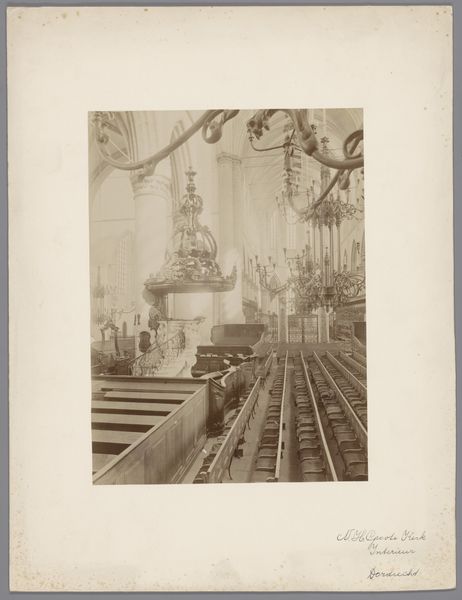
photography, gelatin-silver-print
#
landscape
#
photography
#
gelatin-silver-print
#
genre-painting
#
realism
Dimensions: height 279 mm, width 225 mm
Copyright: Rijks Museum: Open Domain
Curator: This is a photograph, a gelatin silver print, dating from around 1875 to 1900. The image, attributed to Johannes Gerardus Kramer, depicts the baptismal font inside the Walburgis Church in Zutphen. Editor: My first impression is one of solemnity. The dark, enclosed space and the intricate, almost forbidding, metalwork surrounding the font evoke a sense of serious ritual. Curator: The photograph captures a period when church interiors were documented with a renewed focus on realism and detail, revealing not just the sacred objects but also the environment that shapes religious practice. It offers a look at the kind of spaces where such rituals took place at this time in history. Editor: That intricate metalwork stands out to me. It creates a protective enclosure, suggesting the preciousness of what it contains—the symbolic potential for rebirth. The very complexity of its design implies layers of meaning and cultural significance invested in baptism. It seems like a miniature cathedral guarding a wellspring of spiritual renewal. Curator: Precisely. Consider that baptism itself became a complex social marker and civic requirement at certain times. Church attendance reflected the political and social stability of regions. Photography, as it developed, became a crucial means for these local customs and monuments to represent Zutphen's civic identity, especially during the late 19th century. Editor: Absolutely. The upward thrust of the font's structure, almost like a tiered crown, visually emphasizes the power and authority of the Church, both as a spiritual and societal institution. This photo almost transforms it into a fortress of faith. Curator: And photographs such as this circulated widely in albums or were sold as postcards and were therefore able to subtly reinforce shared values. Its distribution aided the formation and dissemination of specific world views. Editor: Looking at it again, I now feel that solemnity intertwined with a sense of resilience. This sacred object continues to endure at the core of the community's belief. Curator: Indeed, offering viewers a window into the past, allowing us to contemplate how faith, community, and image-making intersected in a very specific time and place. Editor: It makes you think about all the generations that came to this font, searching for hope and belonging.
Comments
No comments
Be the first to comment and join the conversation on the ultimate creative platform.

